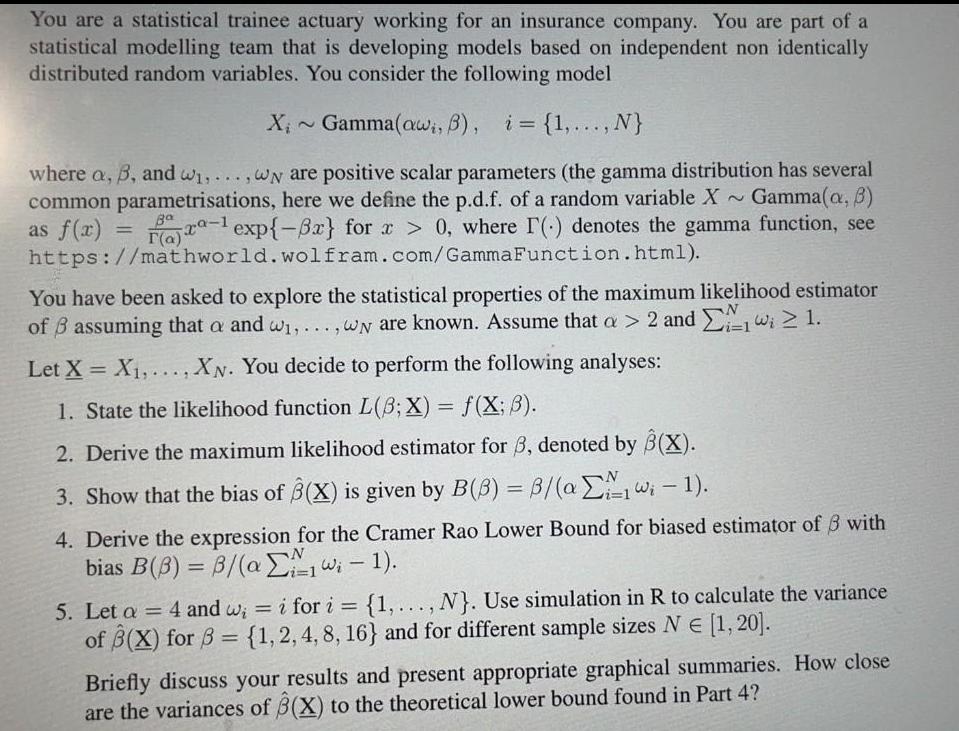Answered step by step
Verified Expert Solution
Question
1 Approved Answer
You are a statistical trainee actuary working for an insurance company. You are part of a statistical modelling team that is developing models based

You are a statistical trainee actuary working for an insurance company. You are part of a statistical modelling team that is developing models based on independent non identically distributed random variables. You consider the following model X ~ Gamma(awi, B), i = {1,..., N} where a, , and w,..., wy are positive scalar parameters (the gamma distribution has several common parametrisations, here we define the p.d.f. of a random variable X~ Gamma(a, 6) Fara-1 exp{-x} for x > 0, where I(-) denotes the gamma function, see https://mathworld. wolfram.com/GammaFunction.html). Ba as f(x) = You have been asked to explore the statistical properties of the maximum likelihood estimator of B assuming that a and w,...,wy are known. Assume that a > 2 and w 1. Let X = X,..., XN. You decide to perform the following analyses: 1. State the likelihood function L(3; X) = f(X; 3). 2. Derive the maximum likelihood estimator for 3, denoted by B(X). 3. Show that the bias of B(X) is given by B(B) = 3/(a W - 1). 4. Derive the expression for the Cramer Rao Lower Bound for biased estimator of with bias B(B) = 3/(a 1 Wi-1). 5. Let a = 4 and w; = i for i = {1,..., N}. Use simulation in R to calculate the variance of B(X) for 6= {1, 2, 4, 8, 16) and for different sample sizes N [1,20]. Briefly discuss your results and present appropriate graphical summaries. How close are the variances of 3(X) to the theoretical lower bound found in Part 4?
Step by Step Solution
★★★★★
3.45 Rating (158 Votes )
There are 3 Steps involved in it
Step: 1
8 given Xi Gamm...
Get Instant Access to Expert-Tailored Solutions
See step-by-step solutions with expert insights and AI powered tools for academic success
Step: 2

Step: 3

Ace Your Homework with AI
Get the answers you need in no time with our AI-driven, step-by-step assistance
Get Started


